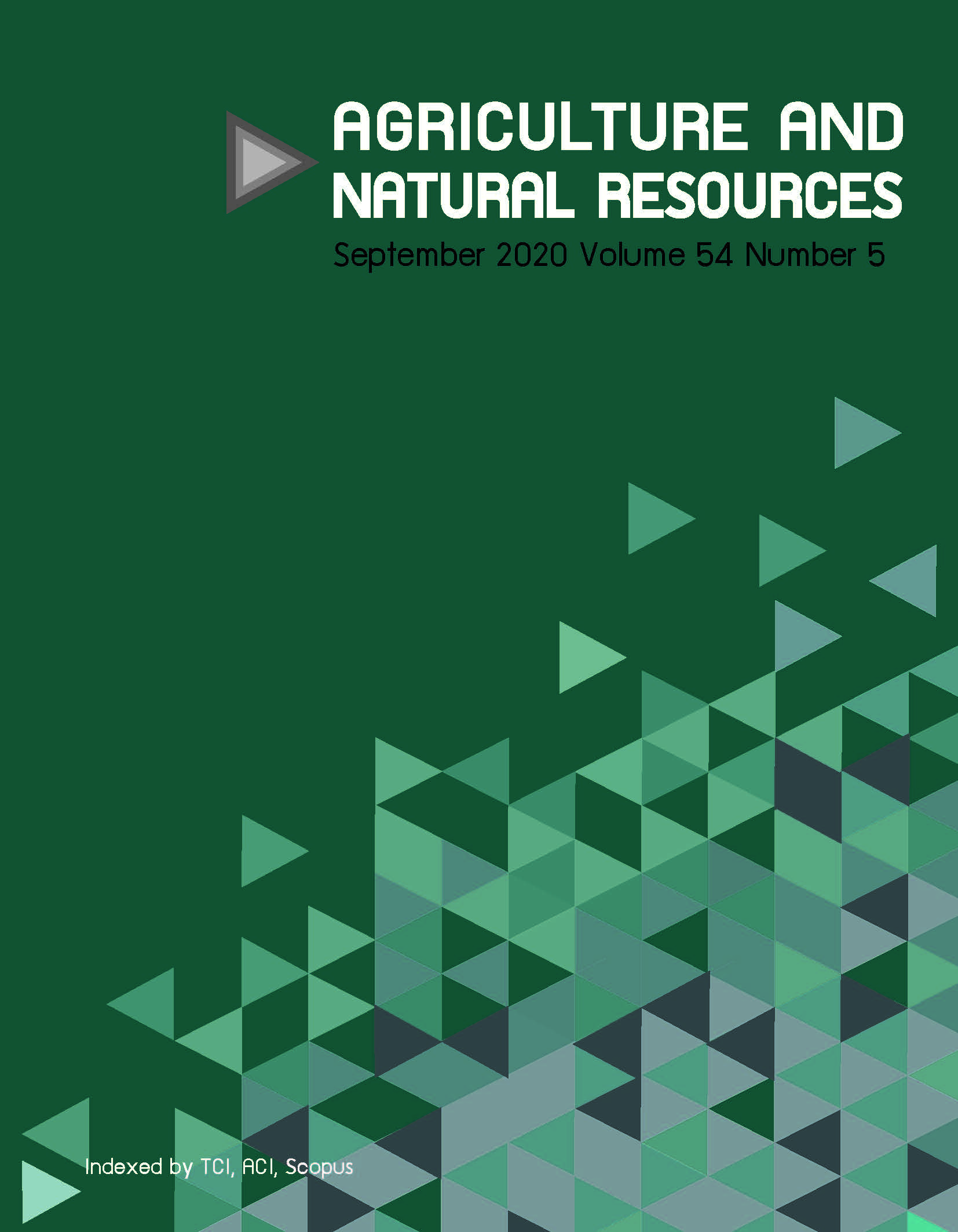Ant community composition in urban areas of Bangkok, Thailand
Keywords:
Ant communities, Nesting site, Pest ant, Urban ant species, Urban areasAbstract
The impact of urbanization on biodiversity is well-documented and ant community composition can be a bio-indicator in habitat disturbance. This necessitates research to understand the diversity and abundance of ants in urban settings. Consequently, ant diversity and abundance were examined using a food baits method and direct sampling and the results were compared among three different habitat types in urban areas in Bangkok city, Thailand. Of the 67 ant species identified from six sub-families in the urban area, five were dominant ant species that had high levels of frequency of occurrence (FO; > 70%). The results indicated that ant richness decreased from green areas to commercial areas. The greatest abundance of ants was in commercial areas where high FO values were recorded for Trichomyrmex destructor (100%), Paratrechina longicornis (93%), Tapinoma melanocephalum (92%), Monomorium pharaonis (79%) and Solenopsis geminata (71%). The findings revealed that a difference in habitat type in the city had a negative impact on ant diversity and abundance, and a difference in nesting habitat for native ant species was identified for each habitat type. While urbanization might have a positive impact on the abundance of invasive ant species, it was concluded that six species of urban ants (T. destructor, M. pharaonis, P. longicornis, T. melanocephalum, S. geminata and Tetraponora rufonigra) might have become abundant pests in urban areas in Thailand. More research is required to examine the impact of each dominant ant species and their nesting habits in relation to different stages of land development.
Downloads
Published
How to Cite
Issue
Section
License

This work is licensed under a Creative Commons Attribution-NonCommercial-NoDerivatives 4.0 International License.
online 2452-316X print 2468-1458/Copyright © 2022. This is an open access article under the CC BY-NC-ND license (http://creativecommons.org/licenses/by-nc-nd/4.0/),
production and hosting by Kasetsart University of Research and Development Institute on behalf of Kasetsart University.







